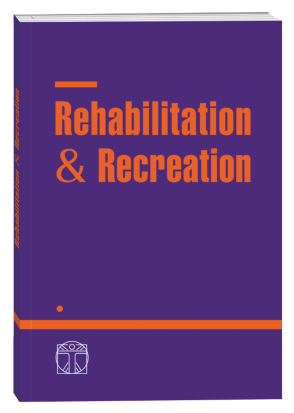COGNITIVE, EMOTIONAL AND SOCIAL DEVELOPMENT CHILDREN WITH DISABILITIES UNDER THE INFLUENCE OF HIPPOTHERAPY
DOI:
https://doi.org/10.32782/2522-1795.2022.11.17Keywords:
horse, social interaction, horse rhythm and gait, health, therapyAbstract
Hippotherapy is a psycho-socio-physiological process taking place in a certain deliberate and organized social situation. It is the presence of a horse that makes it a unique and unrepeatable therapeutic method, giving new and unprecedented possibilities in other therapies to influence the psychophysical state of children undergoing therapy. Hippotherapy requires commitment and faith on the part of the child, parents and rehabilitators and the methods they use. Learning to ride a horse is a side effect. The incentives speak to different spheres. To his body, by developing motor skills, perceptiveness also develops sensitivity, the ability to contact and cope with others, and also shape responsibility for oneself or others. Exercises with the horse, and thus fatigue, have their content and meaning, disappointment or frustration in the event of failure to achieve the intended goal is not a failure, but thanks to a living partner, which is the horse, they become something special, a certain change and a stimulus to understand your own problems and motivation for further action. This study shows the positive impact of the multi-profile rehabilitation method on the cognitive, emotional and social development of people with disabilities with various diseases, and I will also show how much influence close contact with a horse has on the patient. Hippotherapy according to Ingrid Strauβ is one of the neurophysiology-based physical rehabilitation methods, carried out with the participation of a horse. Moving at a walk, the horse transmits movement impulses, which makes it a specific therapeutic medium (link). Training the torso in a sitting position and moving forward in a manner typical for human gait leads to the achievement of the right posture reactions; precise coordination exercises allow for body balancing and balance training. The aim of hippotherapy is to support the comprehensive rehabilitation of a child thanks to the unique sensations that come from contact with a horse. Classes are usually held one to three times a week and last about 30 minutes, can be individual or group, and are usually conducted at an equestrian center.
References
Grygus I., Nagorna O., Nesterchuk N., Nogas A., Podoliaka P., Gamma T. (2021). A clinical case of physical therapy of a child with multiple sulfatase deficiency. Med. perspekt. 26 (2): 202–7.
Hipoterapia. (1999). Informator dla lekarzy, specjalistów i rodziców. Polskie Towarzystwo Hipoterapeutyczne. Warszawa.
Kokhan S. T., Pateyuk A. V., Mingalova M. S., Grygus I. M. (2015). Use hippotherapy in physical rehabilitation of patients with different pathologies. Journal of Education, Health and Sport. 5 (2): 289–296.
Nesterchuk N., Sydoruk I., Tryfonyuk L., Zdanyuk V., Prusik K. (2021). Modern approaches to ergotherapy of children with the Down syndrome. Journal of Physical Education and Sport, Vol. 21 (Suppl. issue 5), 2981–2986.
Savliuk S., Kashuba V., Vypasniak I., Yavorskyy A., Kindrat P., Grygus I., Vakoliuk A., Panchuk I., Hagner-Derengowska M. (2020). Differentiated approach for improving the physical condition of children with visual impairment during physical education. Journal of Physical Education and Sport, 20 (Supplement issue 2), 958–965.
Strauß I. (1996). Hipoterapia. Neurofizjologiczna gimnastyka lecznicza na koniu. Fundacja Na Rzecz Rozwoju Rehabilitacji Konnej Dzieci Niepełnosprawnych «Hipoterapia». Kraków. 27.
Strumińska A. (2003). Psychopedagogiczne aspekty hipoterapii dzieci i młodzieży niepełnosprawnych intelektualnie. Państwowe Wydawnictwo Rolnicze i Leśne. Warszawa. 300 s.
Teichmann Engel B. (2004). Terapeutyczna jazda konna II. Strategie rehabilitacji. Fundacja Hipoterapia – Na Rzecz Rehabilitacji Dzieci Niepełnosprawnych. Warszawa. 457 s.
Walaszek R. (2016). Medical, pedagogical, psychological and social impact of hippotherapy and their level of fitness by using. Borgis – Medycyna Rodzinna. 2. S. 91–97.
Wyżnikiewicz-Nawracała A. (2002). Jeździectwo w rozwoju motorycznym i psychospołecznym osób niepełnosprawnych. Wyd. II. AWFiS, Gdańsk. 75–76.
Zaczyński W. (1997). Praca badawcza nauczyciela. Wydawnictwo Szkolne i Pedagogiczne. Warszawa. S. 171–173.
Downloads
Published
How to Cite
Issue
Section
License

This work is licensed under a Creative Commons Attribution-NonCommercial-NoDerivatives 4.0 International License.











